Do you have a question about the Chevrolet Suburban 2014 and is the answer not in the manual?
Overview of the vehicle's dashboard layout and components.
Provides a brief overview of important vehicle features for new drivers.
Details various features of the vehicle, including infotainment and convenience options.
Covers system performance aspects like StabiliTrak and engine oil life.
Information on vehicle keys, remote keyless entry, and door lock operations.
Details on liftgate operation and power assist steps.
Covers vehicle alarm systems and immobilizer operation.
Instructions for adjusting manual, power, folding, heated, and dimming mirrors.
Guidance on adjusting manual and automatic dimming rearview mirrors.
Details on power windows, express down, and window lockout features.
Information on the sunroof operation, including vent, open/close, and express functions.
Instructions for adjusting head restraints for proper safety and comfort.
Covers seat adjustment, center seat features, power seat adjustments, and lumbar support.
Details on heated rear seats and second/third row seat operation.
Information on proper use, safety belt reminders, and lap-shoulder belt details.
Explains airbag locations, inflation, and system warnings.
Guidance on proper restraint use for older children, infants, and young children.
Details on glove box, cupholders, armrest, rear, and center console storage.
Information on the cargo cover and its operation.
Guidelines for safely loading cargo onto the roof rack.
Covers steering wheel adjustment and steering wheel controls.
Explains the meaning and function of various warning lights and gauges.
Details on the Driver Information Center (DIC) and its buttons.
Lists various vehicle messages and their meanings.
Explains how to customize vehicle features using DIC buttons.
Overview of the heating, cooling, and ventilation system controls.
Information on air outlets and operation tips for directing airflow.
Covers distracted driving, defensive driving, drunk driving, and vehicle control.
Details on new vehicle break-in, adjustable pedals, ignition, and starting the engine.
Information on carbon monoxide hazards and exhaust system integrity.
Explains shift positions, manual mode, and Tow/Haul mode.
Details on four-wheel drive systems, including transfer case operation.
Covers Antilock Brake System (ABS), parking brake, and brake assist.
Information on StabiliTrak system, trailer sway control, and hill start assist.
Instructions for setting, using, and disengaging cruise control.
Details on Ultrasonic Parking Assist (URPA) and Side Blind Zone Alert (SBZA).
Covers recommended fuel, E85/FlexFuel, and fuel additives.
Provides guidance on dealer services, GM parts, and California Proposition 65.
Covers doing your own service work and safety precautions.
Diagram and identification of engine components.
Instructions on ensuring proper engine performance and maintenance.
Explains when to change engine oil and how to reset the oil life system.
Guidance on checking and changing transmission fluid.
Instructions for inspecting and replacing the engine air cleaner/filter.
Information on maintaining the engine's working temperature and safety warnings.
Details on DEX-COOL coolant, mixture, and warning about improper use.
Indicators of overheating, steam warnings, and protection operating modes.
Guidance on checking and using power steering fluid.
Instructions on what to use, adding fluid, and warnings about mixing.
Information on disc brakes, wear indicators, and brake adjustment.
Details on brake fluid level, reservoir location, and what type to add.
Information on battery terminals, warnings, and vehicle storage.
Covers tire types, maintenance, and warnings about improper use.
Explains tire size, construction, DOT markings, and ply material.
Defines terms like air pressure, aspect ratio, bead, and curb weight.
Importance of correct air pressure and consequences of under/overinflation.
Explains TPMS operation, malfunction indicators, and sensor matching.
Recommendations for inspecting tires for wear and damage.
Guidance on rotating tires for uniform wear and resetting the TPMS.
Factors affecting tire wear and recommendations for replacement.
Advice on selecting GM-matched tires and warnings about aftermarket parts.
Impact of non-original size tires/wheels on vehicle performance and systems.
Explanation of tire grading standards for treadwear, traction, and temperature.
Importance of wheel alignment and tire balance for optimal performance.
Guidelines for replacing wheels, bolts, nuts, and TPMS sensors.
Warnings and guidelines for using tire chains, especially for specific tire sizes.
Tips on what to expect and how to handle a tire blowout or flat.
Safety warnings and steps for changing a tire.
Diagrams showing front and rear jack positions.
Procedure for changing a flat tire on the front.
Procedure for changing a flat tire on the rear.
Detailed steps for removing a flat tire and installing the spare.
Instructions on how to properly store tires and tools.
Step-by-step guide for safely jump-starting a vehicle battery.
Guidelines and warnings for towing a disabled vehicle.
Information on dinghy towing and dolly towing for recreational purposes.
Tips for maintaining exterior and interior appearance.
Covers care for locks, washing the vehicle, finish care, and bright metal parts.
Lubrication of locks and recommendations for de-icing agents.
Guidelines for washing the vehicle to preserve its finish.
Recommendations for clearcoat sealant/wax and repairing painted surfaces.
Instructions for cleaning chrome, stainless steel, and aluminum bright metal parts.
Procedure for cleaning exterior lamps, lenses, and emblems.
Guidance on cleaning the windshield and wiper blades.
Tips on applying silicone grease to weatherstrips for longevity.
General information on tire care, including cleaning and checking.
Instructions for cleaning aluminum and chrome wheels and trim.
Preventing dirt abrasions, cleaning knobs/crevices, and handling interior surfaces.
Techniques for cleaning fabric, carpet, and suede surfaces.
Guidelines for proper floor mat usage and safety warnings.
Importance of maintenance for vehicle performance, value, and preventing repairs.
Owner checks and services at each fuel stop, once a month, and engine oil change.
Covers lubrication for severe commercial use and underbody flushing.
Explains services to maintain performance and avoid costly repairs.
Lists recommended fluids and lubricants by usage.
Provides part numbers for common replacement parts like filters and wipers.
Template for recording service dates, odometer readings, and services performed.
Information on Vehicle Identification Number (VIN) and Service Parts Label.
Lists capacities and specifications for various vehicle systems.
Explains the VIN engine code and its relation to engine specifications.
Details information found on the glove box label, including VIN and options.
Provides metric and English conversions for capacities like engine oil and fuel tank.
Diagram showing the routing of the engine drive belt.
Outlines the customer satisfaction procedure for resolving concerns.
Instructions for reporting safety defects to US government, Canadian government, and GM.
Explains vehicle data recording, privacy, and event data recorders.
Overview of OnStar services, including emergency, security, navigation, and diagnostics.
Information on using the navigation system for destinations and trip information.
Details on RFID technology usage in vehicles for functions like tire pressure monitoring.
States compliance with FCC and Industry Canada rules for radio frequency systems.
Steps to follow if concerns are not resolved by dealership management.
Overview of the vehicle's dashboard layout and components.
Provides a brief overview of important vehicle features for new drivers.
Details various features of the vehicle, including infotainment and convenience options.
Covers system performance aspects like StabiliTrak and engine oil life.
Information on vehicle keys, remote keyless entry, and door lock operations.
Details on liftgate operation and power assist steps.
Covers vehicle alarm systems and immobilizer operation.
Instructions for adjusting manual, power, folding, heated, and dimming mirrors.
Guidance on adjusting manual and automatic dimming rearview mirrors.
Details on power windows, express down, and window lockout features.
Information on the sunroof operation, including vent, open/close, and express functions.
Instructions for adjusting head restraints for proper safety and comfort.
Covers seat adjustment, center seat features, power seat adjustments, and lumbar support.
Details on heated rear seats and second/third row seat operation.
Information on proper use, safety belt reminders, and lap-shoulder belt details.
Explains airbag locations, inflation, and system warnings.
Guidance on proper restraint use for older children, infants, and young children.
Details on glove box, cupholders, armrest, rear, and center console storage.
Information on the cargo cover and its operation.
Guidelines for safely loading cargo onto the roof rack.
Covers steering wheel adjustment and steering wheel controls.
Explains the meaning and function of various warning lights and gauges.
Details on the Driver Information Center (DIC) and its buttons.
Lists various vehicle messages and their meanings.
Explains how to customize vehicle features using DIC buttons.
Overview of the heating, cooling, and ventilation system controls.
Information on air outlets and operation tips for directing airflow.
Covers distracted driving, defensive driving, drunk driving, and vehicle control.
Details on new vehicle break-in, adjustable pedals, ignition, and starting the engine.
Information on carbon monoxide hazards and exhaust system integrity.
Explains shift positions, manual mode, and Tow/Haul mode.
Details on four-wheel drive systems, including transfer case operation.
Covers Antilock Brake System (ABS), parking brake, and brake assist.
Information on StabiliTrak system, trailer sway control, and hill start assist.
Instructions for setting, using, and disengaging cruise control.
Details on Ultrasonic Parking Assist (URPA) and Side Blind Zone Alert (SBZA).
Covers recommended fuel, E85/FlexFuel, and fuel additives.
Provides guidance on dealer services, GM parts, and California Proposition 65.
Covers doing your own service work and safety precautions.
Diagram and identification of engine components.
Instructions on ensuring proper engine performance and maintenance.
Explains when to change engine oil and how to reset the oil life system.
Guidance on checking and changing transmission fluid.
Instructions for inspecting and replacing the engine air cleaner/filter.
Information on maintaining the engine's working temperature and safety warnings.
Details on DEX-COOL coolant, mixture, and warning about improper use.
Indicators of overheating, steam warnings, and protection operating modes.
Guidance on checking and using power steering fluid.
Instructions on what to use, adding fluid, and warnings about mixing.
Information on disc brakes, wear indicators, and brake adjustment.
Details on brake fluid level, reservoir location, and what type to add.
Information on battery terminals, warnings, and vehicle storage.
Covers tire types, maintenance, and warnings about improper use.
Explains tire size, construction, DOT markings, and ply material.
Defines terms like air pressure, aspect ratio, bead, and curb weight.
Importance of correct air pressure and consequences of under/overinflation.
Explains TPMS operation, malfunction indicators, and sensor matching.
Recommendations for inspecting tires for wear and damage.
Guidance on rotating tires for uniform wear and resetting the TPMS.
Factors affecting tire wear and recommendations for replacement.
Advice on selecting GM-matched tires and warnings about aftermarket parts.
Impact of non-original size tires/wheels on vehicle performance and systems.
Explanation of tire grading standards for treadwear, traction, and temperature.
Importance of wheel alignment and tire balance for optimal performance.
Guidelines for replacing wheels, bolts, nuts, and TPMS sensors.
Warnings and guidelines for using tire chains, especially for specific tire sizes.
Tips on what to expect and how to handle a tire blowout or flat.
Safety warnings and steps for changing a tire.
Diagrams showing front and rear jack positions.
Procedure for changing a flat tire on the front.
Procedure for changing a flat tire on the rear.
Detailed steps for removing a flat tire and installing the spare.
Instructions on how to properly store tires and tools.
Step-by-step guide for safely jump-starting a vehicle battery.
Guidelines and warnings for towing a disabled vehicle.
Information on dinghy towing and dolly towing for recreational purposes.
Tips for maintaining exterior and interior appearance.
Covers care for locks, washing the vehicle, finish care, and bright metal parts.
Lubrication of locks and recommendations for de-icing agents.
Guidelines for washing the vehicle to preserve its finish.
Recommendations for clearcoat sealant/wax and repairing painted surfaces.
Instructions for cleaning chrome, stainless steel, and aluminum bright metal parts.
Procedure for cleaning exterior lamps, lenses, and emblems.
Guidance on cleaning the windshield and wiper blades.
Tips on applying silicone grease to weatherstrips for longevity.
General information on tire care, including cleaning and checking.
Instructions for cleaning aluminum and chrome wheels and trim.
Preventing dirt abrasions, cleaning knobs/crevices, and handling interior surfaces.
Techniques for cleaning fabric, carpet, and suede surfaces.
Guidelines for proper floor mat usage and safety warnings.
Importance of maintenance for vehicle performance, value, and preventing repairs.
Owner checks and services at each fuel stop, once a month, and engine oil change.
Covers lubrication for severe commercial use and underbody flushing.
Explains services to maintain performance and avoid costly repairs.
Lists recommended fluids and lubricants by usage.
Provides part numbers for common replacement parts like filters and wipers.
Template for recording service dates, odometer readings, and services performed.
Information on Vehicle Identification Number (VIN) and Service Parts Label.
Lists capacities and specifications for various vehicle systems.
Explains the VIN engine code and its relation to engine specifications.
Details information found on the glove box label, including VIN and options.
Provides metric and English conversions for capacities like engine oil and fuel tank.
Diagram showing the routing of the engine drive belt.
Outlines the customer satisfaction procedure for resolving concerns.
Instructions for reporting safety defects to US government, Canadian government, and GM.
Explains vehicle data recording, privacy, and event data recorders.
Overview of OnStar services, including emergency, security, navigation, and diagnostics.
Information on using the navigation system for destinations and trip information.
Details on RFID technology usage in vehicles for functions like tire pressure monitoring.
States compliance with FCC and Industry Canada rules for radio frequency systems.
Steps to follow if concerns are not resolved by dealership management.
| Brand | Chevrolet |
|---|---|
| Model | Suburban 2014 |
| Category | Automobile |
| Language | English |

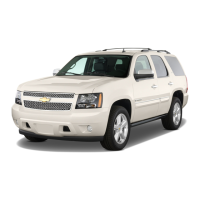


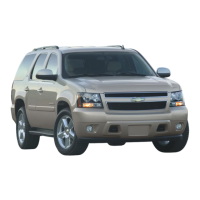



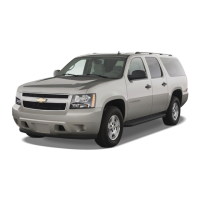

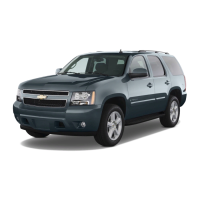
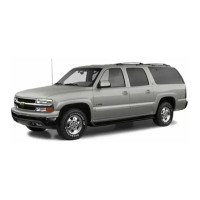
